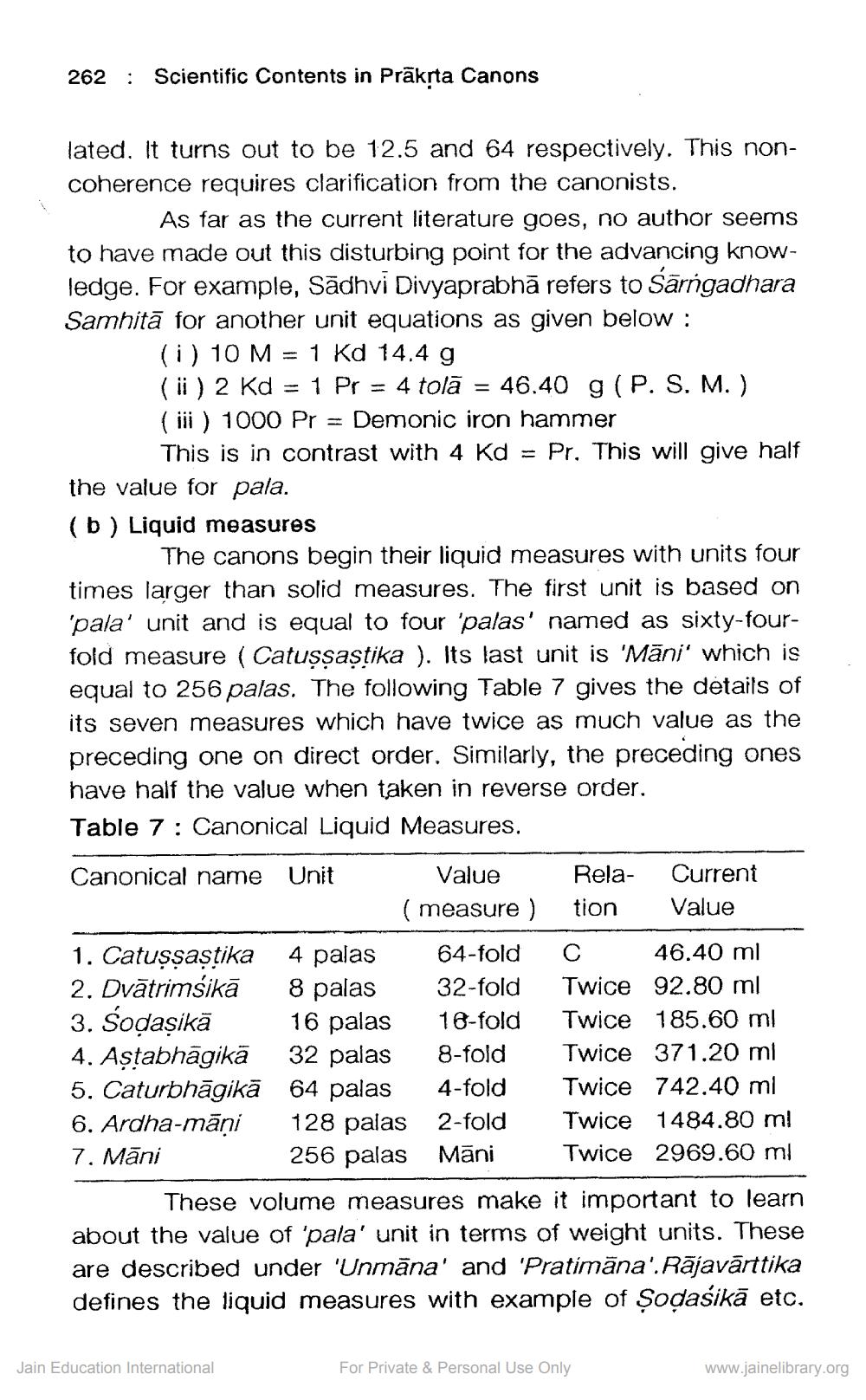________________
262 : Scientific Contents in Prākṛta Canons
lated. It turns out to be 12.5 and 64 respectively. This noncoherence requires clarification from the canonists.
As far as the current literature goes, no author seems to have made out this disturbing point for the advancing knowledge. For example, Sadhvi Divyaprabha refers to Sarngadhara Samhita for another unit equations as given below :
46.40 g (P. S. M.)
(i) 10 M = 1 Kd 14.4 g (ii) 2 Kd = 1 Pr 4 tolā (iii) 1000 Pr = Demonic iron This is in contrast with 4 Kd Pr. This will give half the value for pala.
hammer
(b) Liquid measures
The canons begin their liquid measures with units four times larger than solid measures. The first unit is based on 'pala' unit and is equal to four 'palas' named as sixty-fourfold measure (Catuṣṣastika ). Its last unit is 'Mani' which is equal to 256 palas. The following Table 7 gives the details of its seven measures which have twice as much value as the preceding one on direct order. Similarly, the preceding ones have half the value when taken in reverse order.
Table 7: Canonical Liquid Measures.
Canonical name
Unit
4 palas
1. Catuṣṣaṣṭika 2. Dvātrimsikā 3. Soḍaṣikā
8 palas
16 palas
4. Aṣṭabhāgikā 32 palas 5. Caturbhāgikā 64 palas 6. Ardha-māņi
7. Māni
=
Jain Education International
Value
(measure)
64-fold
32-fold
10-fold
8-fold
4-fold
128 palas 2-fold 256 palas Māni
Rela
tion
Current
Value
46.40 ml
C Twice 92.80 ml
Twice 185.60 ml
Twice 371.20 ml
Twice 742.40 ml Twice 1484.80 ml Twice 2969.60 ml
These volume measures make important to learn about the value of 'pala' unit in terms of weight units. These are described under 'Unmāna' and 'Pratimana'. Rajavārttika defines the liquid measures with example of Soḍaśikā etc.
For Private & Personal Use Only
www.jainelibrary.org




